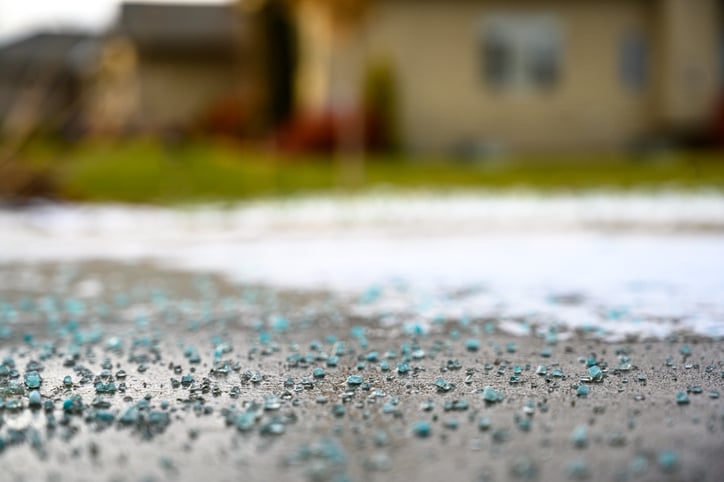Ice melt is essential to every Michigan winter as it is critical to keeping the roads open and safe for use. There are also environmental downsides to its application, one of them being the damage they can cause to vegetation.
Most will have no choice but to spread some kind of chemical compound to safely leave their homes. Even though the number of snowfall days you’ll have to deal with changes depending on how far north you live, there’s usually little chance of avoiding the conditions that will leave your driveway icy and dangerous.
The good news is there are options that can help reduce the chances of damaging your yard during the most brutal winter months by using the correct salt or de-icing products.
What is Ice Melt?
While there are many different ways to deal with precipitation, the most common methods are physical removal and the use of winter salt. Often, ice melt is used to prepare for an incoming storm or deal with one that has left its snowy mark.
Ice melts and de-icers are combinations of salts that lower the freezing point of water, creating an environment where ice can melt, even when the temperature is below its regular freezing point. That’s a handy tool for people who have to live with temperatures dipping below 32 degrees regularly, and different types can be better suited to your situation.
What is Winter Salt Damage?
One item you will run into a lot when it comes to gritting roads and highways is Rock Salt, which is primarily made of 98.5% sodium chloride and, therefore, harmful to your grass and plants. Sodium Chloride draws the moisture out of plants causing discoloration while denying your soil essential nutrients.
Most salt trucks use sodium chloride because it’s the most cost-effective option, so anyone who lives alongside a main road will need to be prepared for this coming into their yard regularly during the winter months.
What Kinds of Ice Melt are There, and What Should I Use To Avoid Salt Damage?
There are a lot of different brands of ice melt out there, but the critical thing to know is the ingredients that make up the salt compound you’re going to be putting on your driveway and potentially in proximity to your lawn.
Minimizing the usage of harmful products is always the best way to avoid excess salt damage, but that isn’t always an option. You can reverse salt damage to your lawn by soaking it to remove excess salt that has entered the soil. You can also use pelletized gypsum soil conditions to reverse salt damage by replacing the salt with calcium and sulfur. This combination will help your lawn heal and encourage new growth.
So what alternatives are there when using ice melt around your home? You can find a list of different de-icers that can help you plan for the next icy spell:
- Calcium magnesium acetate - Safer to use near your lawn and on concrete but comes with the disadvantage of being less effective below 20 degrees F.
- Potassium chloride - This is known to be less harmful to vegetation when used but is also less effective and is usually mixed with rock salt to make up for this shortfall.
- Alternative Products - Sand, kitty litter, and cinders will work as an aid to prevent someone from slipping on the ice but will not do the job of clearing slippery areas like ice melt products.
Let Lush Lawn Help With Your Lawn Needs
Lush Lawn can help with your important lawn decisions and offer assistance with maintaining your yard throughout the coming year, come rain or shine. To get a free estimate for your yard, contact Lush Lawn today.

